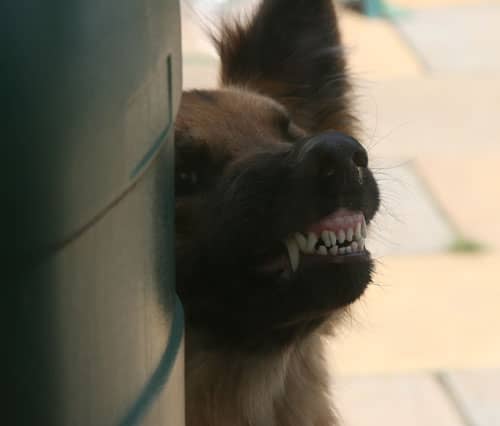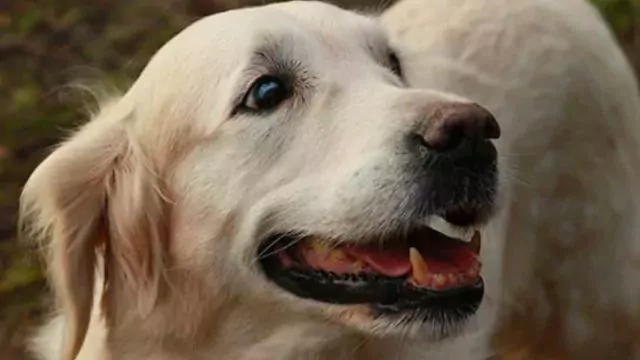Spaying and Castration (Neutering) Dogs
A stark warning about the dangers of early Spaying and Castrating Neutering young dogs and dealing with canine behaviour and dog training from Stan Rawlinson aka Doglistener UKs premier Dog Trainer and Behaviourist. Dog Training The Gentle Way
The Dangers of Neutering Dogs
RSPCA and Australian Labradoodle Breeders in the UK are neutering pups at six weeks of age Please sign my Petition to stop this barbaric practice

Neutering is the general term used for the surgical removal of the reproductive organs in both male and female dogs
We are constantly told that Neutering will make a better and more affectionate family pet.
It is supposed to be a medical fact that spaying and castration can prolong the life of our pets and may reduce the number of certain health problems in later life.
However, in reality, the reverse is actually true, though we are rarely told this by our vets.
Neutering can cause numerous dangerous and fatal diseases. Cancer is just one of them.
I am not a Vet, neither am I clinically trained. My information comes from my experience, records, observations, veterinary professionals and extensive research.
Females may benefit from spaying by reducing the incidence of uterine, mammary, and ovarian cancers. It can also reduce the incidence of infections such as Pyometra.
Castrating a male dog we are informed reduces the risk of prostate cancer. This, like many other claims for the benefits of neutering, is a total fallacy. In reality, castrated dogs have a 4 times greater risk of developing aggressive prostate cancer than intact animals. Spayed or castrated dogs also have a 1.5 to 3 times greater chance of developing bladder cancer
We are also told that they are less likely to develop unwanted behaviour’s such as marking, sexual aggression, and mounting, they are also less likely to escape, roam, or fight with other male dogs. I will accept that these are in some instances correct, castration can help reduce some of these problems.
Some vets recommend that our dogs are spayed or castrated anywhere between 5 to 16 months. In America, some are being done as early as 8 weeks and they routinely neuter at between four and six months.
In the UK there are breeders and rescue centres that routinely neuter. the generic term for spay and castrate) at 6 weeks of age. They should not leave the mother at this age never mind going through serious surgery.
Many of the Vets, Trainers and Behaviourists in both America and the UK are recommending this course of action without understanding the numerous problems this advice may create.

One of the commonest problems caused by neutering is obesity.
Neutering causes dogs metabolism to slow down, meaning it burns calories at a much-slowed rate.
If calories are not burnt off they will obviously gain weight. Some dog’s even on virtual starvation diets and exercised to extreme levels still gain weight.
Obesity is one of the biggest killers dogs and people as well
Some rescue centre’s such as the RSPCA often spay and neuter as a matter of course, whatever the age.
I have written an article pointing to the fact that a number of our “Welfare Societies” are neutering both male and female dogs as young as (1) Six Weeks
A number of breeders are doing the same, This is purely for financial reasons, and certainly not for the well being of the pups. It is simply to keep the prices artificially high.
Owners cannot breed from these poor dogs and the breeder then corners the market.
This is especially prevalent in some breeders of Australian Labradoodles, and Minidoodles, but other breeders are involved as well.
May I recommend that you never buy from a breeder that is prepared to mutilate a tiny puppy. I know of a case, where the breeder a woman called Lisa sold siblings (two dogs from the same litter) which on its own is a recipe for disaster, and something very few breeders would ever recommend.
See (1) Siblings the Worst of Both Worlds To compound the problem she had both of them neutered at six weeks. The buyer was warned but chose to ignore that advice. I have now heard that one of these dogs has serious hip dysplasia, I have no details of the behaviour of these two but assume there will be problems. Sad
It is not just the owner that will suffer. As these poor little dogs start to grow and start to reach maturity. They will become more and more anxious, distressed, and frustrated. It is these poor dogs that will be impaired for the rest of their lives, both physically and mentally. It is an absolute travesty that we can allow these people to do this to young pups.
What happened to the five freedoms under the Animal Welfare Act of 2007. Number three of the five freedoms states. “The need to exhibit normal behaviour patterns” How can these poor pups exhibit normal behaviour patterns when they have had this start in life.?
Grave Concerns|:
I have some very serious reservations about neutering even at six months, but to inflict this on a tiny puppy at six weeks is almost criminal. I believe that for the behavioural health of our dogs, this advice and practice must stop. See the RSPCA article. Click Here There have been numerous scientific studies on the beneficial outcome of neutering, especially on a physiological level. But none I could find on a psychological and behavioural level, until now.
(3) Non-Reproductive Effects on Spaying and Neutering on Behaviour in Dogs This in-depth scientific study involved 0ver 7500 dogs and studied the effects of behaviour on neutering at any age. Deborah L. Duffy, Ph.D., and James A. Serpell, PhD were the experts. It was held at the Centre for the Interaction of Animals and Society, School of Veterinary Medicine, University of Pennsylvania. The results fly in the face of the lies stating that neutering makes for a kinder less aggressive dogs

It was it 2001 that I first began to notice that the incidence of frustration, lack of attention, and puppy-like behaviour, appeared to be far more prevalent in dogs that were castrated and spayed at a younger age.
Rather than those that were allowed to mature naturally before attempting this operation.
As behavioural consultants and obedience trainers, I find that we are treating many more cases where dogs are displaying (paedomorphic) tendencies.
That is puppy-like behaviour’s in adult dogs, which I believe is related to the incidence of early spaying and neutering.
I also observed that bitches spayed too early may be far more interesting to intact males; unwanted male attention.
This can cause the female to become aggressive and protective in adulthood. Neutered young males can also attract attention from full males.
In some cases, these poor animals are hounded wherever that go by unwanted male attention.
Do not blame the males this is caused by neutering while the dogs are still immature and the smell they give off smells like a bitch in season.
The statement below comes from a group of highly respected Vets that are known as (2) The Angry Vets. See the end of the article for more information
“Spaying and neutering not only potentially shortens the lifespan but also has been correlated with various illnesses.” “Obesity (sometimes not even responsive to extreme calorie restriction), osteoarthritis, Anterior Cruciate Rupture, diabetes, hypothyroidism, prostatic cancer, hemangiosarcoma, osteosarcoma, urinary incontinence, urinary tract infection, juvenile vulva.”
“These are just a few conditions that are overly represented in spayed and neutered pets.”
(6) BMC Veterinary Research Scientific proof of the harm that neutering is causing to our dogs as shown in the chart below
Disease | Intact females | Neutered females | Intact males | Neutered males | Percent in study population |
|---|---|---|---|---|---|
Atopic Dermatitis (ATOP) | 83 | 745 | 169 | 641 | 1.82 |
Autoimmune Hemolytic Anemia (AIHA) | 38 | 256 | 38 | 176 | 0.56 |
Canine Myasthenia Gravis (CMG) | 11 | 49 | 6 | 38 | 0.12 |
Colitis (COL) | 61 | 267 | 109 | 256 | 0.77 |
Hypoadrenocorticism (ADD) | 25 | 147 | 20 | 113 | 0.34 |
Hypothyroidism (HYPO) | 62 | 750 | 210 | 678 | 1.89 |
Immune-Mediated Polyarthritis (IMPA) | 24 | 170 | 56 | 141 | 0.43 |
Immune-Mediated Thrombocytopenia (ITP) | 21 | 262 | 29 | 151 | 0.51 |
Inflammatory Bowel Disease (IBD) | 20 | 189 | 46 | 167 | 0.47 |
Lupus Erythematosus (LUP) | 6 | 74 | 30 | 47 | 0.17 |
Pemphigus Complex (PEMC) | 13 | 71 | 11 | 55 | 0.17 |
Pyometra (PYO) | 176 | 27 | NA | NA | 0.44 |
I asked the members of PAACT “The Professional Association of Applied Canine Trainers” to start to monitor the dogs they were treating and to record the time they were spayed and neutered. Their feedback bore out my initial findings.
Other areas of concern are Annual Vaccinations. This practice can have very grave consequences on our pets cats as well as dogs. Read my article outlining the major health issues created by (3) Annual Vaccination Dangers
W
With regard to castration, I believe that males should not be castrated until they have been cocking their leg for at least one month, and should be at least 12 to 36 months of age (depending on size and breed). The larger the breed the later they mature. Therefore something like a German Shepherd would be much later than 12 months. Probably more like 18 months. Unless of course there are medical or serious hormonal based behavioural issues to take into consideration.
In females, I believe that they should have at least one season if they are very small dogs, but preferably two. If they are medium to large, then a minimum of two seasons. Giant breeds such as Great Danes etc a minimum of 3 seasons.
You must wait approximately 3 months after the season before considering spaying, allowing the internal organs to settle down after the season.
However, dogs are all different and can mature at different rates. Some are shy, nervous or have short attention spans. You should think long and hard before taking a decision to neuter, as it may be a decision you may bitterly regret.

Aggression
It has also been observed that young dogs that show aggressive tendencies towards owners, especially before the age of six months; often demonstrate increased aggression after spaying or castration.
Spaying removes the production of progesterone, which is a natural calming hormone and a serotonin uplifter. Spaying may, therefore, escalate any observable aggressive behaviour, either to humans or other dogs.
Despite popular belief, spaying does not calm a female dog down. It may help to calm hormonal aggressive behaviour’s to other intact males, but not female dogs.
How could it when you are removing hormones that affect neurotransmitters that stimulate and upload calming agents?
Many vets and rescue centres will neuter a male dog before they have cocked their leg. It is at this point dogs start to seriously mark territory. Not the half-hearted attempts we see in immature dogs. The immature castrated dog may squat for the remainder of its life and maybe more interesting to intact males.
There appears to be a testosterone surge between 10 and 24 months depending on breed and size. Which clearly turns on dormant hard-wired programs that establish this cocking behaviour. Male dogs also produce Progesterone.
Progesterone and testosterone switches on many of the hard-wired behaviour’s we see in maturity and are not isolated to just one action Therefore, other functions that are not so obvious may be also switched on at this time. These may have social implications and behavioural effects, that aid in the development of dogs psychological and physical growth. If we switch these off by neutering or castrating too early we may be denying the opportunity achieve both mentally and physically the dog’s full adult potential.
Progesterone receptors are found in brain cells, in nerve sheaths and in bone cells, In both male and female dogs. indicating that progesterone is involved in their function. It also appears to be involved in a range of other biological activities. Therefore neutering before both physical and psychological maturity may have numerous other long-term detrimental effects.
Many dogs that have been neutered early, appear to retain far more juvenile characteristics than those neutered when mature. In other words, they retain perpetual puppy like characteristics, whilst this may appear to be initially endearing, who would really want a dog that shows low concentration levels and frustrated puppy-like behaviour for the remainder of its adult life?

Fearful and Timid Dogs
To neuter, a fearful or timid dog will certainly worsen the problem.
The hormones you are removing are involved in calming and serotonin uptake.
Therefore giving confidence to dogs that are sensitive and nervous in certain situations.
I have seen many dogs neutered that suffer far worse symptoms after the operation, and are far more difficult to treat for their fearful behaviour, than before the neutering.
Think long and hard before making a decision on either peer pressure or vet advice before embarking on this option.
There are alternatives which could give you strong indicators of how your dog will be affected by these procedures.;
Tardak is short-term chemical castration, lasting approximately five weeks. However, I feel it is not as positive as a new chemical castration such as Suprelorin that in a small dog could last a year and a large dog for six to nine months.
Can Neutering also cause physiological problems?
Because early neutering removes sex hormones, this delays maturation of “osteoclasts” resulting in the delayed closing of the growth plates of the long leg bones. This can create leggy taller than average dogs, thereby increasing the risk of orthopaedic disorders such as cruciate ligament disease, Hip problems and bone cancer.
It was long believed that eunuchs (castrated humans) were castrated to stop them being interested in the ladies of the Harem.
However they were also used as palace guards, because of the effect neutering has on the “osteoclasts” these eunuchs were therefore appreciably taller, making them more imposing as guards and soldiers.
It has been observed that spaying can significantly increase the risk of urinary incontinence in bitches. And the term “Spay Incontinence” is a common term Early neutering also increases the risk of urethral sphincter incontinence in males (A. Aaron et al., Vet Rec. 139:542-6, 1996.)
Have you heard of ACL it means Anterior Cruciate Ligament That is the ligaments that stabilise the knees? This is one of the most common orthopaedic injuries that are seen in dogs. What is the main cause? It was long believed that it was sudden movement caused this problem. This has now been disproved. Please Read Dr Ron Hines research on this serious Problem Neutering and ACL
A small portion of dogs suffer from torn cruciate’s caused by heavy exertion. These are the agility, working gundogs and heelwork to music type dogs. However, it is now accepted that the vast majority of the dogs that suffer from this debilitating injury have been neutered.
ACL Anterior Cruciate Ligament and HD Hip Dysplasia is on the increase new Research have now shown that dogs over 4 years old that have been spayed or castrated are considerably more likely to suffer cruciate tears and hip dysplasia than dogs that are entire.
In Conclusion:
Neutering should be done, if at all, at the right time and for the right reason and on the right dogs, thereby allowing your dogs to reach full maturity in both body and mind. I believe that a full psychological and physiological set of tests and experiments should be scientifically undertaken, to study the effect of early castration and spaying on all our animals, not just dogs and cats.
These findings though purely observational, have also been borne out by observation and experiences of behaviourists and trainers who are members of PAACT “The Professional Association of Applied Canine Trainers” An organisation dedicated to enhancing and bringing together the two main canine disciplines of obedience training and behavioural therapy. It is PAACT’s belief that to be able to work with dogs on a professional level, you need to be versed in both of these disciplines.
I was asked by numerous people to write an in-depth article on neutering dogs, which explains in far more detail the surgical procedures, risks, and what the hormones removed by this procedure actually do, and their importance to the dog both physically and mentally. Click (7) Neutering in Depth.
Kennel Club Survey: I am of an age that remembers dogs who mainly died of old age. They now appear to die of cancer, liver and kidney disease, heart failure, and various other ailments,
I believe I know why this may be happening? This article will show what I believe the three most common reasons for this horrific decline in longevity (8) Why our Dogs are Dying 11% Sooner Than 10 Years Ago The Kennel Club started the largest survey of its kind in 2014 culminating in the release of dog’s lifespan information in the back end of 2016. It covered 191 breeds and in total 48,891 dogs were involved in the survey. Obviously, they were all pedigree dogs. Given the level of health screening done by many of the breeders of pedigree dogs. It is probably prudent to say that mongrels and designer crossbreeds may have even worse statistics
What the survey found was that the average lifespan of a dog has come down from 11 years to ten years in just a decade.
RSPCA and Australian Labradoodle Breeders in the UK are neutering pups at six weeks of age Please sign my Petition to stop this barbaric practice
Article written by.
©Stan Rawlinson MTCBPT. MPAACT A.dipCCB
Chairman and Founder Member
Professional Association of Applied Canine Trainers.
Contact details for PAACT
www.paact.co.uk
[email protected]
0208 979 2019
My thanks to Ron Hines DVM PhD for his information on Cruciate Ligaments and his in-depth article on Early Neutering
Vet Seriously Concerned With What She Had Done By Neutering Puppies or Adult Dogs
(2) Siblings the Worst of Both Worlds
(3) Non-Reproductive Effects on Spaying and Neutering on Behaviour in Dogs
(4) The Angry Vets
(5) Annual Vaccination Dangers
(8) Why Are Dogs Dying so Young
This is a Peer-reviewed look at the pro’s and cons of Spaying and Neutering and is worth a read
Please CLICK HERE for the review
This is also a very interesting scientific overview that may concern many dog owners, written by a well respected Vet Chris Zink DVM PhD DACVP
CLICK HERE
Further Information
Exact figures for the UK are uncertain, but it is generally accepted that there are around seven million dogs and nine million cats, which is a 5-year upward spiral for the cats and a slight decline in the number of dogs. This reflects out changing lifestyle with the trend for smaller housing, staying single and both adults fully employed, this would tend to make a cat an easier option.
Approximately 135,000 stray dogs per annum are picked up in the UK. 400 are destroyed every week. In the USA the figures are very different, they have almost 70 million dogs almost twice as many per household as the UK. 8 million to 12 million dogs and cats are euthanised annually. It has been suggested that only 50% of all dogs born in the USA will survive to see their second birthday. This is not because they are not caring or loving owners, but simply because they have no organised program for neutering and spaying.
The USA has many more latchkey dogs than the UK, therefore creating far more unwanted pregnancies. Left to there own devices. two dogs and their offspring can produce 67,000 young over a 6-year period. Two cats and their offspring can produce 420,000 over a 7-year period.
As a practising behaviourist and obedience trainer, I am often called to discuss whether the owners should spay or neuter. I find in general that my male clients (the human ones) get a pained expression and cross their legs in agitation when the subject of castration arises.
They generally have no problem with spaying; it is the castration that causes the concern. Yet the opposite is true from my female clients. Who often tell me that their husbands will not entertain their dog being emasculated. yet the wives have no problem with the concept. I wonder why?
Leave a Reply Cancel reply
You must be logged in to post a comment.







Comments (6)
Early Spaying
Thanks for the above article as I was almost swayed into early spaying a bitch I’ve just got. It helped me see sense. I have an older bitch to be done and I’ve waited for her to mature and at now 3 1/2 years I think she can be done but my new one I believe has been saved from early spaying. She’s just 5 months and I was going to get them done at the same time. Thank the lord I saw this article,
Already castrated and now regretting it!
Hi Stan
I am extremely distressed on reading your article, and only wish I’d done more research prior to my Airedale Terrier’s castration. The op was performed when he was almost 19 months old (two weeks ago today). All went well and his recovery was swift. However, he has now become a devil dog especially in the evenings – destructive, snappy, barking, jumping all over the furniture and people, and generally behaving like the Tasmanian Devil. The nurse at the vets said I should consider a behaviourist but, of course, would make no comment on the link between the surgery and the post op behaviour. I am really frustrated and wished I hadn’t had him done but we are where we are now.
Any comments on this would be much appreciated.
This really saddens and I
This really saddens and I hear see this far too often. I am looking into hormone replacement therapy currently so watch this space.
Castration
Hi
I have been very influenced by your articles in the care of our first dog, a male border collie who will be 4 in September. He has not been castrated.
However we are encountering some difficulties now.
Girl chasing is a big deal now and we’re endlessly dragging him away. It doesn’t seem to matter if they’re spayed or not.
Male dogs seem to see him as a challenge and can challenge him; this has led to him behaving aggressively to male dogs sometimes, getting his point in first.
He does ‘leave’ when told, but we often have to insist and act quite cross with him. This is starting to affect his confidence: the opposite of what we hoped for. He doesn’t play very much any more.
I notice you said, in a reply to another correspondent, that these things have not been a problem for you, but, as well as your greater experience, I note you have a ready-made ‘pack’, which must give them more confidence.
Do you have any suggestions? Are there any supplements we could try? Strategies?
Many thanks
Margaret Pitcher
Castration
Hi You could try Suprelorin or Tardak. both are chemical castrators that act for a period of time Suprelorin can act for up to a year to more commonly a lower dose could be for six months Tardak is a much shorter period though will give n indicator if castration would change the behaviour. Often it doesn’t and you may need intervention from a behaviourist that could put a sound interruption in place that can stop OCD behaviour.
Castration
A very distressing article that’s something that I knew was going on especially as far as vets were concerned. We never heard of this type of behaviour 40 years ago. Veterinarians today I’ll give him such terrible advice to young dog owners who are in encouraged to neuter the beautiful young dogs and animals this barbaric practice must stop. Neutering especially small dogs and laptop dogs is an absolute disaster and shame.
I will do all I can to highlight this atrocious social lifestyle choice to castrate one’s own pet simply because of ignorance and laziness of the owner.